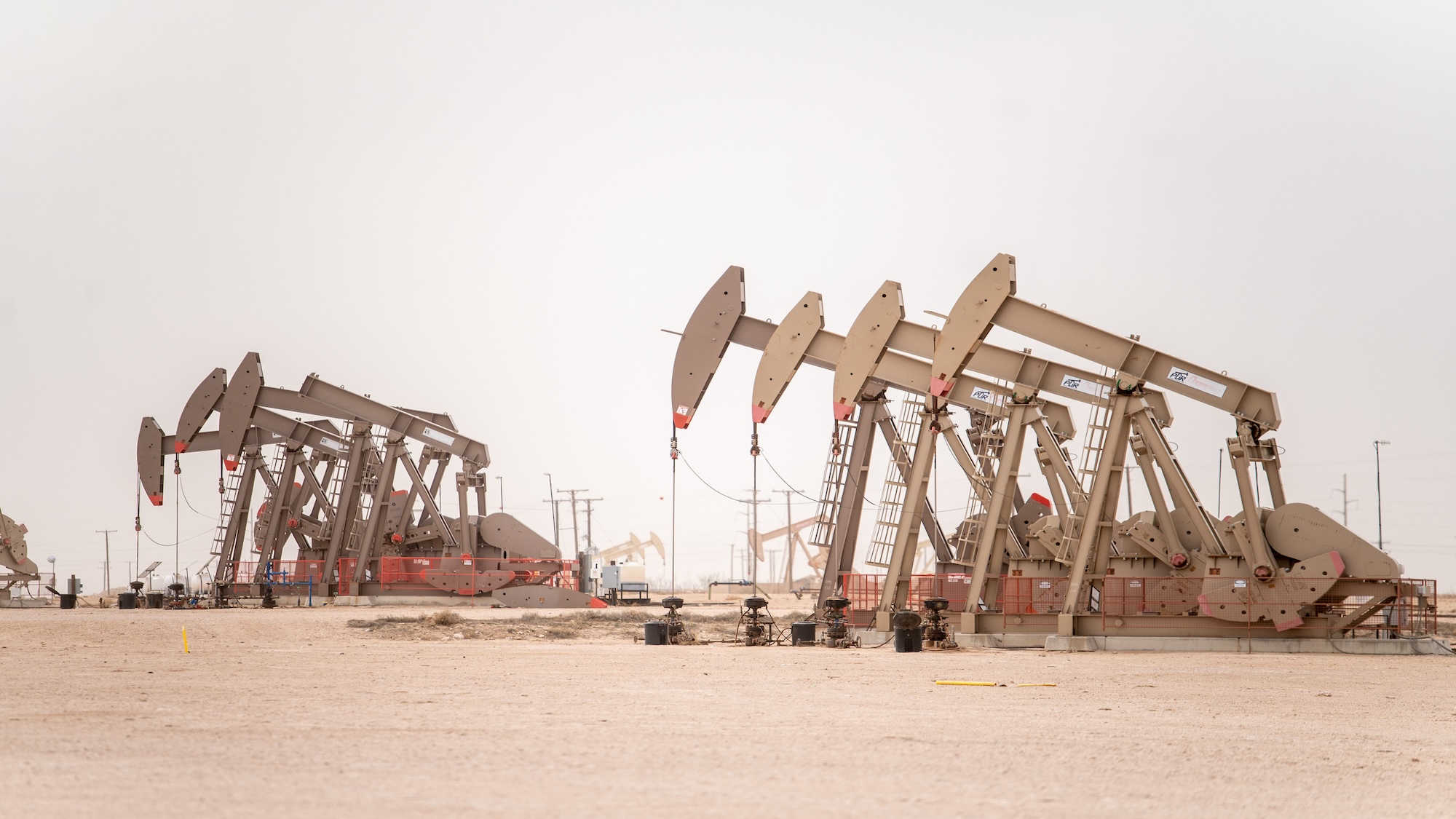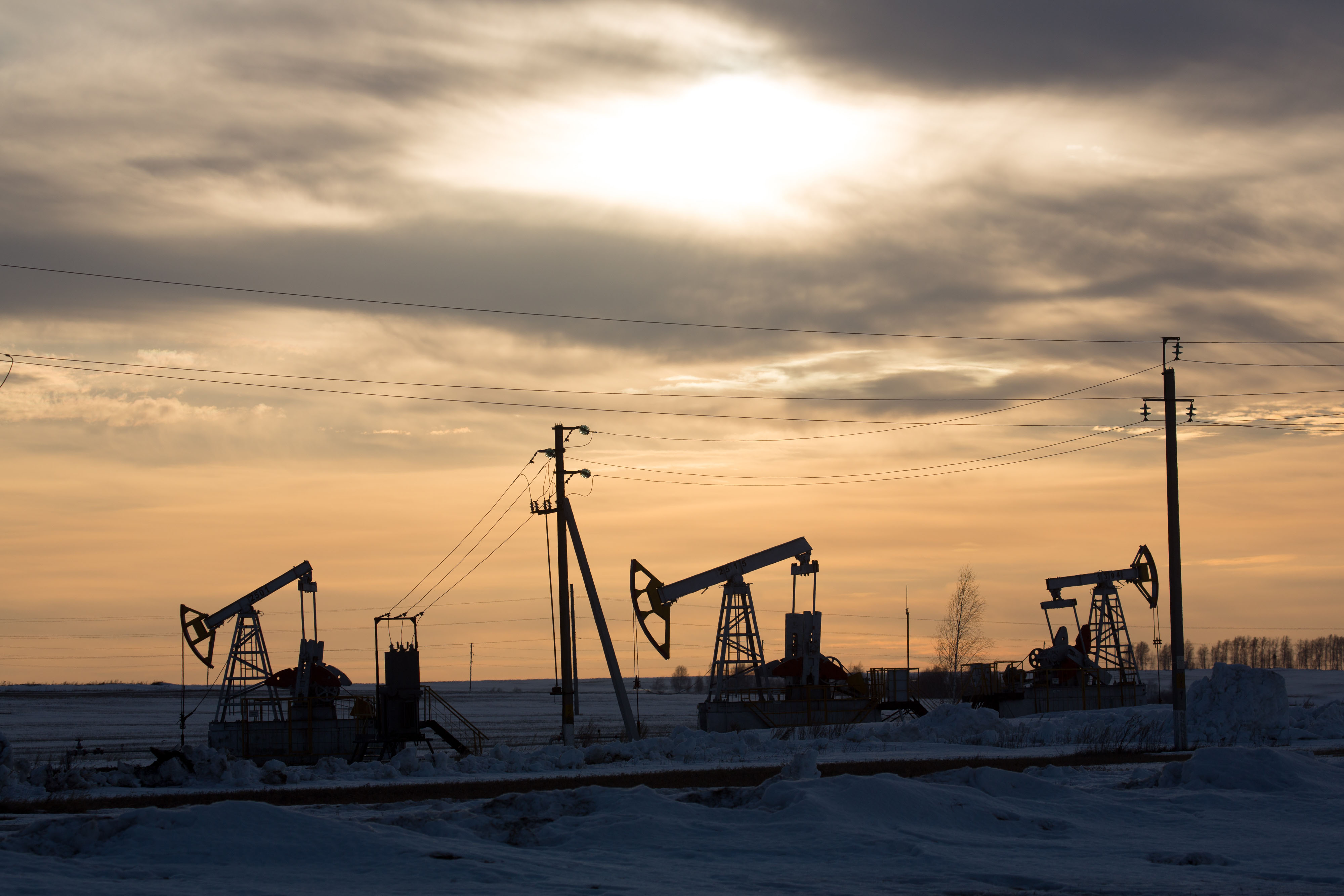Oil price posts two-year highs - but how long can it last?
Brent rose above $59 a barrel this week, its best third-quarter showing since 2004

Oil price hits 2016 high but it is not out of the woods yet
7 March
Oil's prolonged rally saw prices rise to their highest level so far this year, with the international benchmark Brent crude rising to $39.50 a barrel on Monday morning.
The upsurge is now into its sixth day of trading, which represents the "longest winning streak for months", says the Financial Times. Ric Spooner, the chief market analyst at CMC Markets, told Reuters there was "a good prospect that Brent could hit $40" later today.
The Week
Escape your echo chamber. Get the facts behind the news, plus analysis from multiple perspectives.

Sign up for The Week's Free Newsletters
From our morning news briefing to a weekly Good News Newsletter, get the best of The Week delivered directly to your inbox.
From our morning news briefing to a weekly Good News Newsletter, get the best of The Week delivered directly to your inbox.
Among the positives driving the upbeat mood is a further drop in the number of active rigs drilling for shale oil in the US, according to a report from oil services company Baker Hughes on Friday.
This is seen as a sign that a supply glut could finally be set to rebalance after a production turf war that has gone on for 18 months.
Adding to the bullish sentiment is the ongoing optimism over a deal to freeze output at January levels signed by number of oil-producing countries, including the two largest, Saudi Arabia and Russia.
Finally, there is straightforward market momentum. Reuters says "large amounts of short positions [are] being closed and bets on rising prices opened".
A free daily email with the biggest news stories of the day – and the best features from TheWeek.com
However, there are downside risks to be considered. Any surprise that leads sentiment to turn quickly could cause traders to cover hefty positive bets and accelerate a negative shift.
As for where bad news might come from, there are plenty of reasons to worry that the oversupply, which currently runs at around two million barrels per day, will persist.
At above nine million barrels a day, US shale oil production has remained stubbornly high, despite last year's predictions that it would quickly collapse, while the nations that have agreed to the freeze are those that are already "producing at close to capacity", says Barclays.
Added to that, production might still rise as the likes of Iran, which is ramping up exports since emerging from international sanctions, have not signed up.
As such, the agreement could have little effect unless demand surges.
Oil price: 'remain wary of possible rallies'
3 March
A growing number of analysts and market observers have begun tentatively calling the bottom of the market for oil.
The positivity has come on the back of hopes for a deal to halt increases in global output, which has the backing of a number of major exporting countries including Russia and Saudi Arabia, the two biggest producers.
"The market has suddenly started to focus on bullish headlines. This has created huge inflows, buying from hedge funds," said Oystein Berentsen, the managing director of crude at Strong Petroleum.
Robert Yawger, the director of the futures division at Mizuho Securities USA, told the Wall Street Journal: "The market seems willing to shrug off bearish developments and push the upside."
However, not everyone is convinced. "We continue to remain wary of possible rallies," said Daniel Ang of brokerage Phillip Futures.
This bearish view is based on doubts that the deal to freeze production at January levels will sufficiently ease global oversupply, which is currently running at one to two million barrels a day. Russia's output in January reached record high of 10.9 million barrels, while Saudi Arabia was also pumping more than ten million barrels a day and output from the wider Opec cartel was at multi-year highs.
Nor does the agreement have the backing of Iran, which is attempting to add at least one million barrels a day to its exports since emerging from international sanctions.
Added to this is the rapid advance in US shale, which was the trigger that set the current turf war in train. Surprisingly, producers in this high-cost sector have found efficiencies few thought possible and output remains well above nine million barrels a day.
US stockpiles surged by more than ten million barrels to a new record last week – a build four times higher than expected by analysts. Some reckon flexible production in the US, which does not require huge investment over many years to get going, could undermine future upwards moves.
Seth Kleinman, an analyst at Citi Research, speculated that prices above $40 a barrel "would prompt shale producers to reverse many of the production cuts that are supporting the rally" and send prices tumbling again.
Oil price hits two-month high as Russia proclaims 'critical mass' for supply freeze
2 March
Oil prices continued their steady, if stuttering, upward progress on Tuesday, with the international benchmark Brent crude rising to a two-month high above $37 a barrel.
The prolonged rally has been fuelled by hopes for a deal to freeze glut supplies, seen as the first step to the sort of output cuts needed to rebalance a heavily oversupplied market. Yesterday's announcement from Russia's energy minister, Alexander Novak, that a "critical mass" of producer nations were now signed up to the agreement added to the optimism.
"Russia, Saudi Arabia, Venezuela and Qatar announced last month that they were willing to freeze production at January levels," says the Wall Street Journal. "Other countries in Africa, Latin America and the Persian Gulf have expressed optimism about joining the deal. Russia and Venezuela said last week they are planning a broad meeting of producers in mid-March."
The major stumbling block is Iran, the main regional rival for Saudi Arabia, Opec's de facto leader, and a renascent oil behemoth with the world's third largest reserves. The lifting of international sanctions in January has seen the country's leaders determined to ramp up oil production to boost its battered economy.
There have been rumours that an eventual deal could allow the country to cap production at a higher level than now in line with its pre-sanctions levels. This increase might even be offset by natural attrition in pumping elsewhere - already this month, a pipeline issue in northern Iraq and Nigeria has hit oil flows.
CNBC notes, however, that most brokers believe that until a deal to freeze production evolves into full blown cuts, it will do little to significantly enhance prices in a market currently oversupplied to the tune of two million barrels a day. The scale of the overhang left over from the 18 month-long production turf war is massive and still growing.
The American Petroleum Institute emphasised the point yesterday, with data showing a shock stockpile gain in the US of nearly ten million barrels last week, almost three times the consensus expectation. That was enough to undermine the rally and Brent dipped back below $37 this morning.
Oil price: why it is rising again - and can the rally last?
01 March
The oil price remains volatile and low, but it has also been undeniably heading upwards overall since hitting its latest nadir in the middle of February.
From 11 February, when the international benchmark Brent crude was last below $30 a barrel, oil has moved 17 per cent higher overall and was this morning at close to $37, Reuters notes.
While there are several reasons the stuttering rally has persisted, there are also significant doubts over whether it can be maintained.
1. Production deal
Without doubt, the main issue in the market is an excess of production - the result of a bitter turf war between oil powers that has continued despite the ravages the price slump has taken on budgets. Recent talks between Saudi Arabia, the de facto leader of the Opec cartel, and Russia, which led to a tentative deal to stop output rising further, have given hope that the glut may be about to ease.
There was further positive comment from Saudi Arabia yesterday that gave confidence to investors, with a statement saying the kingdom "will always remain in contact with all main producers in an attempt to limit volatility and it welcomes any cooperative action".
2. Supply issues
There has also been some positive movement on supply that has nothing to do with coordinated action. A Reuters estimate put Opec daily production at 32.37 million barrels in February, down by around 300,000 barrels a day, primarily the result of a pipeline problem in the Kurdish region of Iraq.
At the end of last week, Shell and other firms also announced force majeure on a pipeline in another Opec member state Nigeria due to a leak, the Wall Street Journal reports, which could reduce production from the country by 250,000 barrels a day this month.
3. US shale hit
Finally on the supply theme, there is evidence that the main intent of the decision by Opec to keeping pumping at rapid rates over the past year and a half, taming the growth in the US shale oil industry, might be working. Data published last week said production fell to 9.1 million barrels last month, while a report noted another decline in the number of rigs drilling in the country.
4. China demand
On the other side of the rebalancing equation, there are hopes that demand in China will remain high or even grow. These were boosted overnight by the announcement of more monetary policy stimulus in the form of a reduction in the amount of capital banks are required to hold, which should boost lending and liquidity.
As China is the second largest oil consumer in the world and still among the fastest-growing economies, despite a slowdown in expansion, its demand potential is a critical sentiment driver for all commodities – and especially oil.
So will the rally last?
There are definitely more reasons for oil traders - and environmentalists worried about the effect of low prices - to be cheerful and investors are responding. Data from the owner of the New York Stock Exchange yesterday revealed that bullish bets on prices rising in the future are now at their highest since records began in 2011.
But there are many reasons to think that the rally may yet be undermined. First and foremost, the production deal remains shaky and is contingent on other major suppliers talking part. In this context, how to incorporate Saudi Arabia's regional rival Iran, which is trying to ramp up production since emerging from sanctions, will be a key issue - but the country is currently not even involved in the talks.
Oil currently remains two million barrels a day above demand, while shale production is higher than anyone thought it would be and falling by only small increments. For the rally to push prices back to reasonable levels, it is therefore likely the supply deal talks will need to lead to a firm deal – and perhaps eventually a stronger commitment to cut supply.
-
 How drones have detected a deadly threat to Arctic whales
How drones have detected a deadly threat to Arctic whalesUnder the radar Monitoring the sea in the air
-
 A running list of the US government figures Donald Trump has pardoned
A running list of the US government figures Donald Trump has pardonedin depth Clearing the slate for his favorite elected officials
-
 Ski town strikers fight rising cost of living
Ski town strikers fight rising cost of livingThe Explainer Telluride is the latest ski resort experiencing an instructor strike
-
 How might the Israel-Hamas war affect the global economy?
How might the Israel-Hamas war affect the global economy?Today's Big Question Regional escalation could send oil prices and inflation sky-high, sparking a worldwide recession
-
 Recent mega-mergers could signal a turning point for the US oil industry
Recent mega-mergers could signal a turning point for the US oil industryTalking Point Both Chevron and Exxon have recently spent billions to acquire smaller oil companies
-
 Has Saudi Arabia lost control of oil prices?
Has Saudi Arabia lost control of oil prices?Today's Big Question Kingdom goes it alone to cut production, risking tension with US and reigniting cooling inflation in Europe
-
 US angered by Opec+ oil cut
US angered by Opec+ oil cutSpeed Read Energy prices to rise further as producers slash supply by two million barrels a day
-
 Global oil demand forecast lowered for 2020 and 2021
Global oil demand forecast lowered for 2020 and 2021Speed Read IEA report says jet fuel demand remains the major source of weakness
-
 Are US-Iran tensions flaring again?
Are US-Iran tensions flaring again?In Depth Trump threatens military action over Twitter
-
 Can a deal be struck to raise oil prices?
Can a deal be struck to raise oil prices?In Depth Opec+ will convene today over video link in a bid to boost crude
-
 What do negative oil prices mean?
What do negative oil prices mean?In Depth Perfect storm of oversupply and storage shortages sees producers paying to get rid of US crude